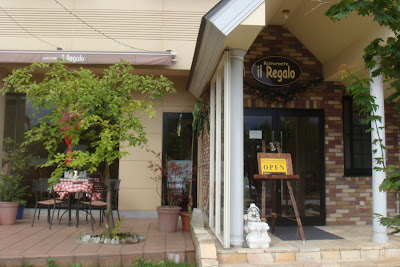It's beautiful weather here in Koriyama. After the hot summer and the typhoon, we have clear, bright autumn days. Temperatures in the low 20s, fresh and bright, perfect.
But the radiation worries rumble on. Not much good news. People eat a lot of rice here so naturally the coming harvest is a cause for concern. The system is that rice is tested two weeks before harvest and then after harvest. If any rice has over the limit of 500 becquerels/kg then tests are repeated and shipment is banned from that (small) area. We've been having reports of rice being clear for a while now but the areas were in Bange and Kitakata, both in the east on the other side of Mt Bandai where levels are low so we took the much publicised results with a pinch of salt. But now results from Nihonmatsu, which is half way between Fukushima City and Koriyama and got a heavy dousing of radioactive particles in March, are showing 500 bq/kg. Not much of a surprise there then. More tests promised.
Professor Kodama from the Radioisotope Centre of Tokyo University, who gave that impassioned speech to the Diet in June, came to Nihonmatsu and told authorities about a machine being developed to test every bag of rice on a conveyor belt. He wants them to press the government to speed up development. That's the kind of constructive action we need.
Forms for claiming compensation from Tokyo Electric have been sent out to individuals (companies later). The explanatory booklet runs to 150 pages. It's like a self assessment tax form gone mad. Receipts are needed for all claims. People who were evacuated got an interim payment of 1 million yen per household plus 300,000 yen per person but this is to be deducted from the final payment so they're still unable to plan for the future. Evacuees got 100,000 yen per month, or 200,000 yen if they were in a shelter, but this is to be cut to 50,000 yen per month for all from October. The payments are supposed to be for stress but as they still don't know where they're going to be living in a year's time it's no less stressful now. Volunteer lawyers are coming to Fukushima to help people fill in the forms. There's a full page ad in the paper from the Japan Legal Association warning people not to sign a disclaimer that will prevent making further claims in future. So Tokyo Electric's attitude to compensation is proving pretty controversial.
Meanwhile, it's been announced that hydrogen has been found in the pipes at Reactor No.1. One percent which doesn't sound much but it turns out that 4% can cause a hydrogen explosion. Great. They're adding extra boric acid to neutralise it. Just goes to show that the situation is far from stable. Until they can get inside the reactors they don't know what they'll find. But that's going to take years.
I wish I had some good news. Well, I've reorganised my kitchen. I lost two thirds of my crockery in the quake and for the last six months I've been keeping what was left in boxes in my bedroom afraid to put it back in the cupboards. A friend who, believe it or not, was in the Kobe earthquake too, didn't have a pot broken. So I've taken a leaf from her book. My plates and cups are down below and only light stuff - tea and tupperware - are in the top cupboards!
Goodnight all
Anne
 |
| Koriyama yesterday. Mount Adatara to the north. Big I, the high rise building near the station, has the world's highest planetarium - it's in the Guiness Book of Records! |
 |
| Big Palette Fukushima where I was at the time of the earthquake. At the peak it housed 2,000 evacuees from Tomioka and Kawauchi. |
 |
| Most of them are here in Koriyama's temporary housing. I counted 300 households at this location and there are more being built. |



































